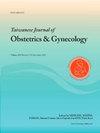产前检测到家族中无症状携带者包含CHRNA7和OTUD7A的家族性15q13.2q13.3微缺失的遗传咨询
IF 2
4区 医学
Q2 OBSTETRICS & GYNECOLOGY
引用次数: 0
摘要
目的介绍1例家族性15q13.2q13.3微缺失的产前诊断。病例报告一名35岁,妊娠2期,第1段的妇女,因胎儿和母亲中15q13.2q13.3微缺失而进行遗传咨询。携带者母亲无症状,表型正常。由于胎儿超声显示鼻骨短,该妇女在妊娠17周时接受了羊膜穿刺术。羊膜穿刺术显示核型为46,xx。对未培养羊膜细胞提取的DNA进行同步阵列比较基因组杂交(aCGH)分析,结果显示arr [GRCh37] 15q13.2q13.3 (30,954,726-32,509,926) × 1, 15q13.2q13.3微缺失1.56 mb,包含FAN1、TRPM1、MIR211、KLF13、OTUD7A和CHRNA7 6个OMIM基因。产前超声检查正常。这名妇女有一个健康的4岁女儿。四年前,在她第一次怀孕的前三个月,她接受了扩展的无创产前检查(NIPT),结果是15q13.2q13.3缺失。随后的羊膜穿刺术显示核型为46,XX,未培养羊膜细胞的aCGH分析显示没有基因组失衡。然而,没有对这名妇女和她的丈夫进行进一步的基因检测。因此,该妇女在再次怀孕时并未意识到自己的携带者身份。在怀孕期间,随后对父母血液的aCGH分析显示,母亲有1.56 mb 15q13.2q13.3微缺失,父亲没有基因组失衡。那个女人犹豫着要不要留下孩子。然而,在遗传咨询之后,该女子的父母被建议接受15q13.2q13.3微缺失的基因检测。68岁的无症状健康祖父携带相同的15q13.2q13.3微缺失,而祖母没有这种微缺失。这名妇女最终决定继续怀孕,一个2750克的健康婴儿在足月出生,没有任何表型异常。结论家族性15q13.2q13.3微缺失在三代内不存在表型异常。本文章由计算机程序翻译,如有差异,请以英文原文为准。
Genetic counseling of prenatally detected familial 15q13.2q13.3 microdeletion encompassing CHRNA7 and OTUD7A with asymptomatic carriers in the family
Objective
A case of prenatal diagnosis of familial 15q13.2q13.3 microdeletion is presented.
Case report
A 35-year-old, gravida 2, para 1, woman was referred for genetic counseling because of 15q13.2q13.3 microdeletion in the fetus and the mother. The carrier mother was asymptomatic and normal in phenotype. The woman underwent amniocentesis at 17 weeks of gestation because of short nasal bone on fetal ultrasound. Amniocentesis revealed a karyotype of 46,XX. Simultaneous array comparative genomic hybridization (aCGH) analysis on the DNA extracted from uncultured amniocytes revealed the result of arr [GRCh37] 15q13.2q13.3 (30,954,726–32,509,926) × 1 with a 1.56-Mb 15q13.2q13.3 microdeletion encompassing six OMIM genes of FAN1, TRPM1, MIR211, KLF13, OTUD7A and CHRNA7. Prenatal ultrasound was normal. The woman had a 4-year-old healthy daughter. Four years ago, during her first pregnancy, she underwent expanded non-invasive prenatal testing (NIPT) in the first trimester, and the result was 15q13.2q13.3 deletion. Subsequent amniocentesis revealed a karyotype of 46,XX, and aCGH analysis on uncultured amniocytes revealed no genomic imbalance. However, no further genetic test in the woman and her husband had been made. Therefore, the woman was not aware of her carrier status when she was pregnant again. During this pregnancy, subsequent aCGH analysis on the parental bloods revealed a 1.56-Mb 15q13.2q13.3 microdeletion in the mother and no genomic imbalance in the father. The woman was hesitant to keep the baby. However, following the genetic counseling, the woman's parents were advised to receive genetic testing for 15q13.2q13.3 microdeletion. The 68-year-old asymptomatic healthy grandfather carried the same 15q13.2q13.3 microdeletion, and the grandmother did not have such a microdeletion. The woman finally decided to continue the pregnancy, and a healthy 2750-g baby was delivered at term with no phenotypic abnormalities.
Conclusion
Familial 15q13.2q13.3 microdeletion may present no phenotypic abnormalities in three generations.
求助全文
通过发布文献求助,成功后即可免费获取论文全文。
去求助
来源期刊

Taiwanese Journal of Obstetrics & Gynecology
OBSTETRICS & GYNECOLOGY-
CiteScore
3.60
自引率
23.80%
发文量
207
审稿时长
4-8 weeks
期刊介绍:
Taiwanese Journal of Obstetrics and Gynecology is a peer-reviewed journal and open access publishing editorials, reviews, original articles, short communications, case reports, research letters, correspondence and letters to the editor in the field of obstetrics and gynecology.
The aims of the journal are to:
1.Publish cutting-edge, innovative and topical research that addresses screening, diagnosis, management and care in women''s health
2.Deliver evidence-based information
3.Promote the sharing of clinical experience
4.Address women-related health promotion
The journal provides comprehensive coverage of topics in obstetrics & gynecology and women''s health including maternal-fetal medicine, reproductive endocrinology/infertility, and gynecologic oncology. Taiwan Association of Obstetrics and Gynecology.
 求助内容:
求助内容: 应助结果提醒方式:
应助结果提醒方式:


